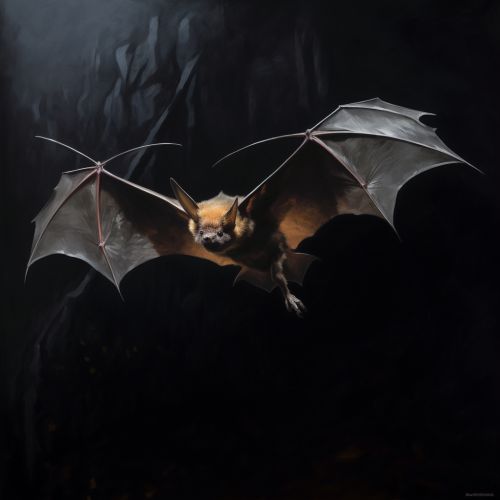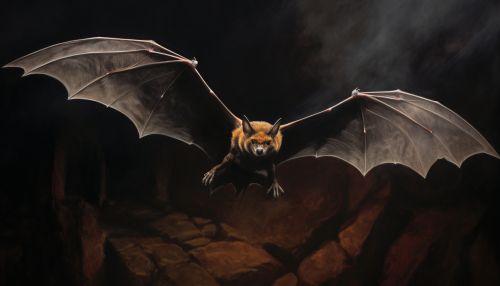Bat
Introduction
Bats are mammals of the order Chiroptera. With their forelimbs adapted as wings, they are the only mammals capable of sustained flight. Other mammals, such as flying squirrels or gliding possums, can only glide or soar for short distances. Bats are less efficient at flying than birds, but are more maneuverable, using their very long spread-out digits covered with a thin membrane or patagium.


Biology and Evolution
Bats are among the most diverse groups of mammals, with over 1,400 species recognized worldwide. They evolved from small, insectivorous terrestrial mammals about 50 to 60 million years ago, during the early Eocene epoch. The exact lineage of bats is still subject to debate among scientists, but it is generally agreed that bats belong to the superorder Laurasiatheria, which also includes carnivores, pangolins, odd-toed ungulates, and even-toed ungulates.
Anatomy
Bats exhibit unique anatomical features that distinguish them from other mammals. Most notably, their forelimbs have evolved into wings, a feature they share only with birds and insects. The wing structure of bats is dramatically different from that of birds, with a flexible wing membrane stretched between elongated fingers, allowing bats a high degree of control over their flight.
Echolocation
Many bat species are known for their ability to echolocate, or use sound waves to navigate and locate prey. This involves emitting high-pitched sounds and listening for the echo to determine the location and distance of objects in their environment. Echolocation is a complex and highly specialized skill that has evolved independently in several groups of animals, including dolphins and some birds.
Diet and Feeding
Bats have a diverse range of diets, but most species are insectivorous or frugivorous. Some species are also known to consume nectar, pollen, fish, frogs, small mammals, and even blood, as in the case of the vampire bat. Their feeding habits and dietary preferences have significant ecological implications, as bats play crucial roles in pollination, seed dispersal, and pest control.
Reproduction and Lifespan
Bats typically give birth to one pup per year, making them less prolific than rodents of comparable size. They have relatively long lifespans and slow reproduction rates, which can make populations vulnerable to extinction. Some species of bats are known to live for over 30 years in the wild, a feat that is quite rare among mammals of their size.
Conservation
Bats face numerous threats, including habitat loss, hunting, disease, and climate change. Many species are currently listed as endangered or threatened, and conservation efforts are underway worldwide to protect these unique and beneficial animals. Bats are protected by law in many countries, and numerous organizations are dedicated to bat conservation.
